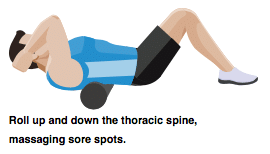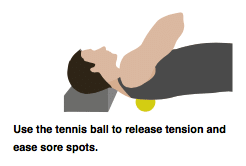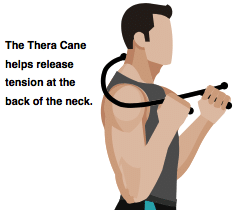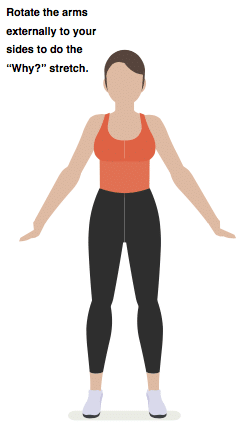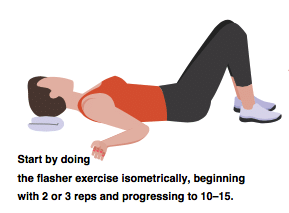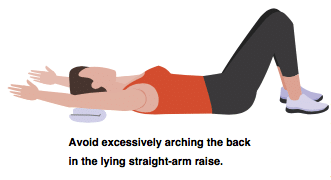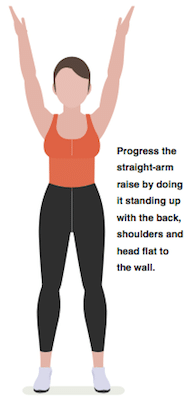
Shoulder Pain and Injury Prevention
Shoulder pain and injuries make it harder to exercise and play sports. Damaged shoulders also limit basic functions, impair quality of life and disturb sleep (Acton 2011). What’s more, research suggests that almost a quarter of your client base will experience shoulder pain/injury at one time or another (Ghosh 2012).
What can you do to help clients avoid shoulder damage so they can exercise regularly, enjoy daily activities, and reach their health and fitness potential? Start by learning about common shoulder problems and reviewing a range of exercises to keep the shoulders strong and ease the sting of shoulder pain.
Common Shoulder Injuries
Though diagnosing shoulder injuries is outside your scope of practice as a fitness professional, you still need to know the terminology of commonly diagnosed shoulder conditions/injuries so you can communicate effectively with clients. These are the four most common types:
- rotator cuff disorders, such as tears or inflammation in one of the four rotator cuff muscles and accompanying tendons
- glenohumeral joint disorders, such as “frozen shoulder” and joint inflammation
- acromioclavicular joint diseases, such as osteoarthritis
- referred neck pain, where neck problems cause shoulder pain (Mitchell et al. 2005)
Knowing the anatomical elements of the shoulders (see the sidebar “Shoulder Anatomy”) will help you pinpoint clients’ problems, identify musculoskeletal imbalances exacerbating the conditions, and design appropriate corrective exercise strategies.
Exercises to Correct Shoulder Imbalances
Shoulder pain usually results from musculoskeletal imbalances in the core structures of the shoulder joints (see the sidebar “Shoulder Imbalances That Cause Pain and Injuries”). Thus, exercise programs to prevent shoulder damage or ease pain must address these imbalances.
All shoulder-joint exercise programs should begin with self-myofascial release, progress to stretching and then embrace strengthening exercises (Price & Bratcher 2010). If a client complains of shoulder pain, assess the likely causes (such as thoracic kyphosis, protracted shoulder blades and others mentioned in the sidebar), and find an appropriate exercise from the options that follow.
Foam Roller on Thoracic Spine
This exercise rejuvenates the muscles of the thoracic spine and shoulders by releasing excessive tension, which helps improve excessive thoracic kyphosis and protracted shoulder blades.
- Lie on your back over a foam roller with your hands behind your head and chin tucked in (the roller should be perpendicular to your torso).
- Bend your knees, tuck your hips to prevent the lower back from arching, and lift your pelvis off the floor.
- Roll up and down along the thoracic spine, massaging sore or tender spots for 30 seconds to 2 minutes.
Tennis Ball Around Shoulder Blade
Massaging the muscles that retract and depress the shoulder blades addresses protracted and elevated shoulder blades and prepares the tissues for subsequent strengthening exercises.
- Lie down with your knees bent, head resting on a pillow.
- With a tennis ball beside one shoulder blade (between the blade and the spine), pull the arm on that side across your chest.
- Find a sore spot and hold for 10–15 seconds to release tension, pausing on all sore spots around the shoulder blade.
Thera Cane® on Back of Neck
This exercise rejuvenates the muscles on the back of the neck to alleviate problems from elevated shoulder blades, a forward head and excessive cervical lordosis.
- Sitting in a chair, place the hook end of the Thera Cane on the back of your neck (on the neck extensors and upper fibers of the trapezius muscle).
- Apply pressure by pulling the handle of the Thera Cane down and outward; pause on any sore spots you find to release tension.
Tennis Ball on Front of Shoulder and Chest
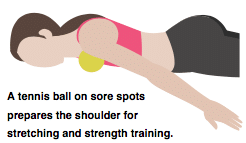
This exercise releases tension in the muscles at the front of the shoulder and chest, enabling the arms to externally rotate and the scapulae to retract. It also prepares this area for subsequent stretching and strengthening exercises.
- Lie face down with arm outstretched straight, palm down.
- Place a tennis ball on the front of the shoulder/chest and scoot your body to move the ball to any sore spots.
- Maintain pressure for 30 seconds to relieve tension; move to another sore spot.
“Why?” Stretch
This exercise stretches the chest and fronts of the shoulders while strengthening the rhomboids, lower traps and external rotators of the shoulders/arms to realign the entire shoulder girdle.
- Stand upright with pelvis tilted posteriorly, arms externally rotated to sides.
- Contract the rhomboids and external rotators to help pull the arms and shoulders back while activating the lower traps to assist in pulling the shoulders down.
- Hold the contracted position for about 30 seconds; release and repeat.
Biceps Stretch
This exercise increases flexibility of the biceps muscles (especially the biceps brachii, as it originates on the scapula), enabling the shoulder blades to retract and depress to improve function of the glenohumeral joint.
- Face away from a high countertop or a window sill. Rotate one arm behind you, placing the hand (thumb-side down) on the surface and keeping the arm straight.
- Rotate the shoulder inward and down, and bend the knees until you feel a stretch in your biceps.
- Hold the stretch for approximately 30 seconds; switch arms.
The Flasher
This exercise strengthens the muscles that keep the torso upright and the head back, retract/depress the shoulder blades and externally rotate the arms. The move also stretches the muscles in the front of the chest and shoulder.
- Lie on your back with arms bent, elbows close to your sides, hands pointing toward the ceiling (use a pillow for head support if needed).
- Pull the shoulder blades back and down as you externally rotate your arms by bringing the backs of your hands toward the floor. (You should feel the movement between the shoulder blades and in the backs of the arms near the top.)
- Perform the exercise isometrically at first, holding the contracted position for 15–20 seconds and repeating 2–3 times. Progress to 10–15 repetitions.
- Progress further by doing the movement in a standing position and abducting the arms so the upper arms are perpendicular to the floor while the back, shoulders and head are flat to the wall (Note: If necessary, clients can bend their knees to help keep the lower back flat.)
Lying Straight-Arm Raise
This exercise engages the thoracic extensors to encourage better spinal extension and reduce excessive thoracic kyphosis. It also strengthens the muscles that stabilize the scapulae to prevent excessive “shrugging” (i.e., elevated shoulder blades) when using/raising the arms.
- Lie down with your knees bent, pelvis tucked under (posteriorly rotated).
- Slowly raise your arms overhead, keeping them straight and engaging the muscles that hold the shoulder blades back and down. (Make sure the lower back does not arch excessively during the movement.)
- Perform the exercise isometrically at first, holding the “arm up” position for 10–15 seconds and repeating the move 2 or 3 times. Progress to 10–15 repetitions.
- Progress further by performing the movement in a standing position with the back, shoulders and head flat to the wall. (Note: Clients can bend their knees to keep the lower back from arching if necessary.)
Score a Win Against Sore Shoulders
Shoulder pain and injuries afflict people across the fitness spectrum. Understanding the most common causes of shoulder pain and integrating corrective exercise strategies into client programs that target these underlying imbalances produces a win-win for your clients and your business.
